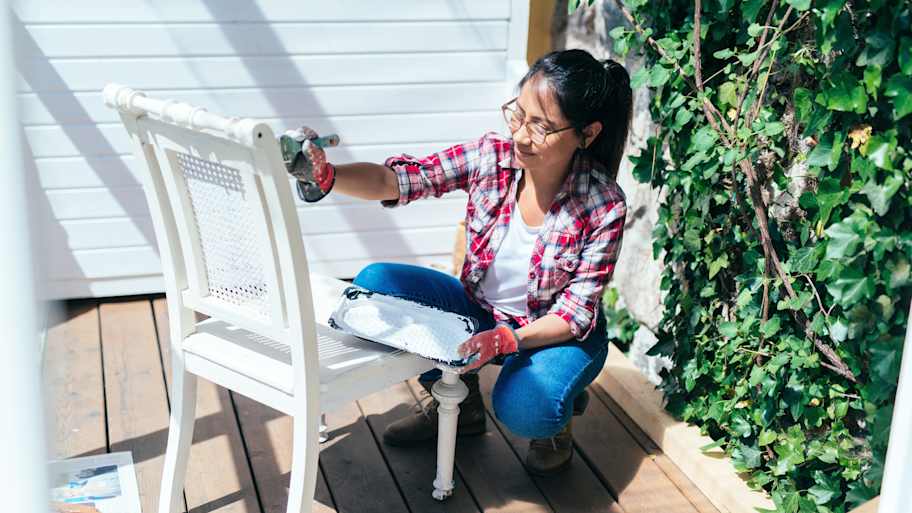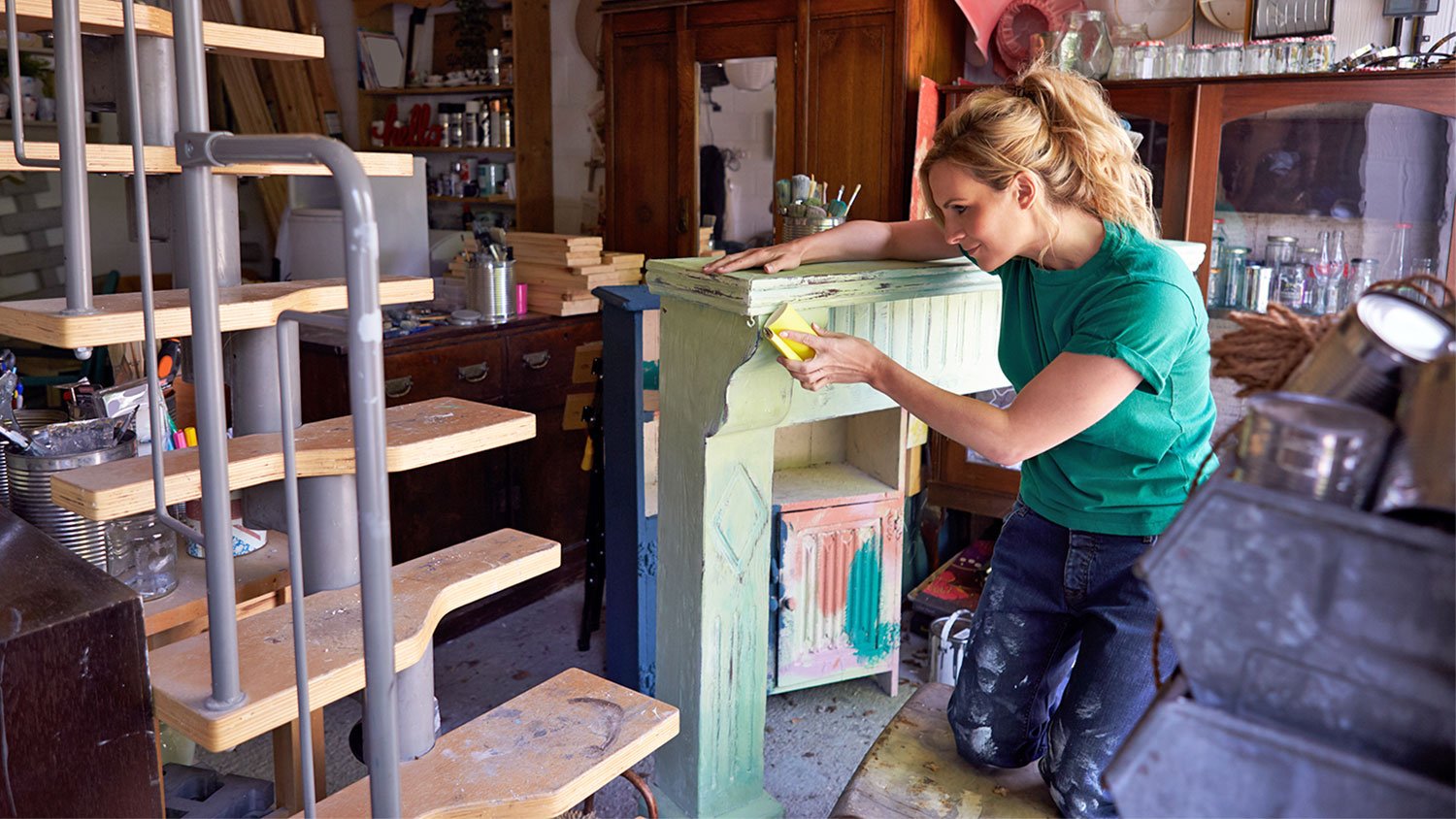
Discover the average furniture reupholstery cost, what impacts pricing, and how to save money on your next project. Get expert tips and cost breakdowns.
A little dab can clean up most stains and spills


Keeping your upholstered pieces looking clean can be as simple as using some pantry staples. But if your furniture is made of specialty fibers (like velvet or leather) or has extensive staining, it’s best to send it off to a local professional cleaner. For simple stains, follow the steps below to create an at-home solution.
Just like our clothes, most furniture and upholstery have labels with important cleaning codes. Some upholstered furniture or items such as blinds and shades are made using delicate fabrics and it’s recommended to have a professional with specialized cleaners and tools to handle those times without the risk of damage.
Most upholstered furniture comes with attached labels, usually under the couch, seat cushion or removable pillow cushions. If you still can’t find them, check out the manufacturer’s website if the piece is new. If it’s vintage, you may have to consult a professional cleaner to give you more details about the material.
Each furniture label should include a cleaning code. That cleaning code gives you specific information that can be helpful in how you approach your cleaning process. There are four common furniture cleaning codes and how to care for them:
W: Use water or a water-based cleaner
S: Use a solvent cleaner
W/S: Use a solvent or water-based cleaner
X: Vacuum only
Some over-the-counter or DIY stain removers can make stains worse. If you are unsure of the material and the stain is over a week old, a professional cleaner will know the correct solution to use.

Due to the natural fibers used on many upholstered pieces, it’s important to tackle any stains, spills or dirt immediately so they don’t have time to settle into the fabric and make it harder, if not impossible, to get it looking great again. Once you determine the type of cleaning method appropriate for your upholstered furniture piece, create a cleaning solution based on that code.
A water-based cleaning solution means your upholstered furniture piece simply needs water to be cleaned. This is most commonly found on high-use furniture like kitchen chairs and couches where stains can accumulate from mealtime (or your family always snacking on the sofa).
If water isn’t enough, mix four cups of warm water with one-fourth cup of dishwashing liquid in a large bowl. You can use either a whisk or hand mixer to make a foam and get a slightly deeper clean.
A solvent-based cleaning solution is similar to needing to be dry cleaned. You do not want to apply water-based cleaning methods to these fibers since they might leave rings, shrink the fabric, warp it or damage it. That doesn’t mean you have to send it off to get cleaned but spot cleaning a smaller and less visible area will be important to see if it can sustain a DIY cleaning solution.
To clean upholstery with an “S” code, pour isopropyl alcohol into a spray bottle. The isopropyl alcohol is a solvent that loosens stains. If the stain has an odor, you’ll want to have baking soda on hand as well.
Anything labeled with “W/S” can use either of the methods listed above. Anything with an “X” can only be vacuumed and if a deeper stain remains you’ll need to call a cleaning professional.

Before adding your solution, clear the area of dust and debris with a vacuum or brush. If your cleaning tag shows a “X” as its cleaning code, this means the furniture cannot be cleaned by other methods other than a vacuum or gentle brush. If this needs more than a vacuum to clean, it’s best to reach out to a furniture cleaning pro for recommendations.

Before you start using your upholstery cleaner on your piece, find an area that isn’t visible and use your cleanser there first.
For “W” or “W/S” pieces, spot clean the area using water or the foam from your DIY water-based solution with a soft brush in a circular motion. Use sparingly and do not over-wet or saturate the area since that might leave water stains.
For “S” or “W/S” pieces, lightly spray the stained area with the isopropyl alcohol from your spray bottle and gently rub the area using a microfiber cloth. You may need to reapply the alcohol but be conservative with the spraying since you don’t want to destroy the fabric with more alcohol than necessary.

If your spot treatment doesn’t show further damage, then you’re safe to use it on your upholstery. If it did damage the upholstery (for example, created a water ring or discolored the fabric), double check you have the right solution for the cleaning code or call in a professional.
If the stain has an odor, sprinkle some baking soda on the fabric for 30 minutes up to an hour and then use the vacuum to remove the baking soda.
Depending on the stain and reason for the cleaning, you may need extra time for your upholstery to dry. Don’t be tempted to leave anything out in the sun to speed up drying time as that may cause permanent sun damage. If an item needs to be dried quickly, you can gently use a hair dryer in a circular motion so as not to concentrate on the area and cause a ring to appear. It could take an hour or longer for upholstered pieces to dry so it’s best to be patient.

As with any household cleaner, you’ll want to safely store any cleaning solutions and keep it out of the reach of young children and animals. If you have any extra solution you want to keep, make sure to label the bottle using a sticker and permanent marker. That way you can use it again in the near future and won’t forget the ingredients you used to create it.
Keeping furniture clean and looking fresh doesn’t need to take a lot of time or cost a lot of money. Often, furniture can be spot cleaned with simple ingredients found in a grocery or hardware store. While some items might require a furniture restorer for care, most furniture can be tackled with a little elbow grease and a handful of ingredients that cost less than $20.
Is hiring a professional furniture cleaner worth the spend? It depends. If you feel you can get a stain out of a couch easily yourself, there is no need to send it for a professional cleaning. If you feel like you’ve cleaned it as well as you could and you need a deeper cleaning because of accumulated dust, pet dander, or spills, a professional cleaner may be worth it.
The cost for professional upholstery cleaner averages around $170, but varies based on your furniture size, level of damage, and fabric type. Keep in mind that a cleaning company may also charge a flat rate per house visit. It may be cost effective to group similar items together as opposed to having the pro only clean one item each visit.
From average costs to expert advice, get all the answers you need to get your job done.

Discover the average furniture reupholstery cost, what impacts pricing, and how to save money on your next project. Get expert tips and cost breakdowns.

Wondering how much it costs to refinish a table? Get average prices, cost factors, and tips to help you budget and choose between DIY or hiring a pro.

Get transparent furniture refinishing cost information and learn average prices, cost factors, and ways to save before hiring a pro and starting your project.

Discover custom furniture costs, including average prices, cost factors, and tips to help you budget for your next custom piece.

Give your old furniture a fresh look with these tips for refinishing furniture, perfect for DIYers ready to restore and refresh.

If you’re looking into refinishing some furniture, here are some common furniture refinishing questions you can expect to discuss with a pro.